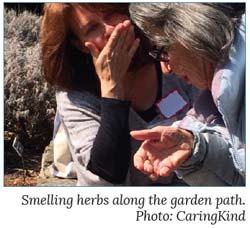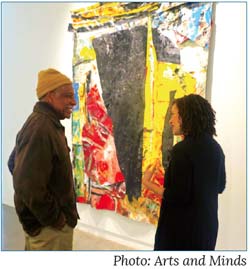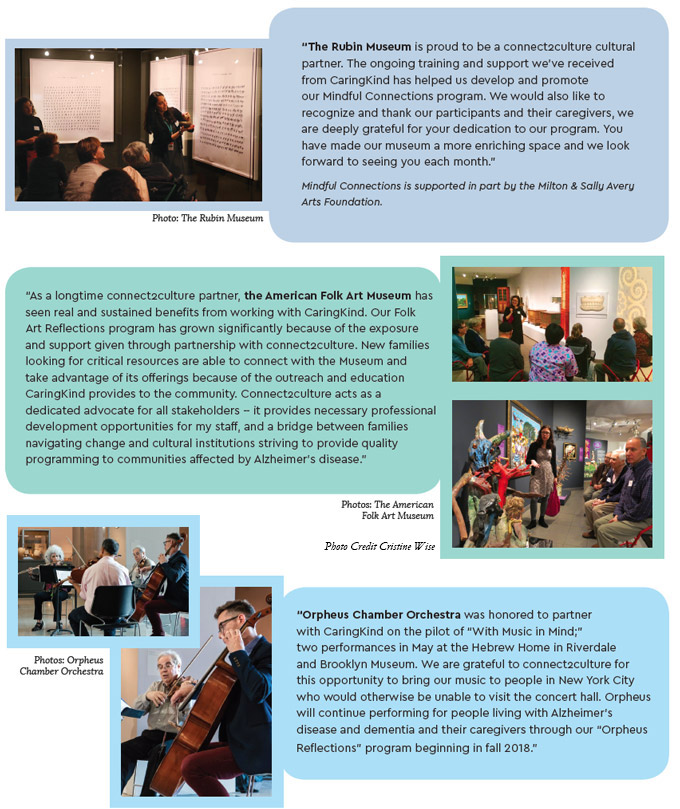Demystifying connect2culture® Training
Meredith Wong,
Manager of Connect2culture®
How many times have you gone to a museum where the staff understands the urgency of finding an accessible bathroom or helps you find the galleries or cafe? Trained staff know that if these requests can be met, their visitors will appreciate and likely remember their experience. Connect2culture believes that the key to creating spaces and programs that you can enjoy is an approach to visitor services that goes beyond training just the program staff. It extends to the security guard who is friendly and patient, or front-of-house staff who helps you and the person with dementia navigate the bag check and metal detector or the volunteer who guides you to a place to sit.


Knowing that the disease affects each person differently, the facilitator focuses on the strengths of their program participants by integrating different opportunities for participants to connect through sensory memories, for example, singing a familiar naval tune like Anchors Aweigh while sitting on the deck of an aircraft carrier or feeling moist soil in your hands as you pot an herb at the botanic garden. If someone has lost their sense of smell or taste, then other senses allow them to access the experience.
As the pool of cultural partners grows to include botanic gardens, performance and visual arts organizations, and history museums, connect2culture hopes that through understanding the effects of dementia on the whole community – friends, neighbors, family – the sensitivity to their needs for sensory and social stimulation will grow.
Testimonials


Previous Next





